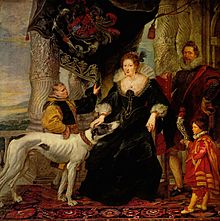The study of our history is ongoing and is continuously developing and expanding with each new discovery and interpretation. It is always fascinating to find evidence of people's interest in history throughout the centuries, in this particular case it is in a non-academic source. From this particular text we can see which fact about each monarch was the most important to their rule according to contemporaries, and therefore chosen to be included in the poem.
This poem is taken from the Poet's Corner in the Madras Courier, dated the 8th December 1791 (Volume 7, Issue 322).
CHRONOLOGY of the KINGS of
ENGLAND by Prior.
ENGLAND, the conqueror, in First William owns
Rufus and Henry are the victors sons;
His daughter Alice, weds the Earl of Blois,
Stephen their offspring was the peoples choice.
Maud, Henrys daughter, who was Empress first;
Then Anjou from this later issue nurst,
The Second Henry, to whom Stephen left,
The Crown, of which he was alas! bereft.
Henry did Ellen Guiennes heiress wed;
Richard and John were children of their bad:
From John sprung Henry, of that name the Third,
Who felt the cruel wars his Barons stir'd,
Long time he reign'd first Edward he begot
Who join'd the Welshman and subdued the Scott
From Edwards Loins a second Edward rose,
Him fav'rites spoil'd, him parliaments depose,
And raise his son, third Edward, to the throne,
For France's wars and Englands parter known;
He against Valois sought as Isbells heir,
The daughter, she, of Philips, call'd the fair;
His Grand-Sires Crown the second Richard wore,
Hard sate, the warlike Father went before,
For the unhappy King the crown must grant,
To Henry, fourth, bold son of John of Gaunt,
Fourth son of Edward third; tho' Edmund's claim
Was best, from Lionel third son he came,
Lancasters race, in Henry thus begun,
He leaves his question'd title to his son,
Fifth Henry is his name; his arms advance,
The English standard over trembling Frances;
Whose King, sixth Charles, hequeath'd to Henry's power,
His daughter Katherine, and his realm her dower,
Henry the sixth does from his marriage spring,
How good a Saint, and yet how poor a King!
He lost the realm his mighty Father seiz'd,
Crown'd and uncrown'd as fate and Warwick pleas'd.
On England's Throne fourth Edward next does shine,
Sir-nam'd Plantagenet, of Yorkshire Line,
Nearer than Lancaster by one degree:
He sprung from Richard; from Philippa he,
From Lionel, third Edward weak and young,
Over his head the Honor only hung;
Spoil'd of his Crown he in his Prison bleeds,
Third Richard, cruel Uncle, next succeeds;
But Fate is just, and he in, Bosworth fields,
To Henry Seventh both Life and Scepter yields.
This mighty Prince of the Lancastrian race,
Does thus from Edward Third his Lineage trace,
Edward had Gaunt John, of Sommerset;
John did another of that Name beget:
He Margaret had, who gave our Henry Birth,
His Father's race descends from wallish Earth;
For Owen Tudor did in secret Wed,
French Kathrine, Widow of Fifth Henry's bed,
From whence sprung Edward, who was Henry's Sire
Both Coats did therefore to his Right conspire,
And great Elizabeth receiv'd his vows,
Fourth Edward's Daughter, last of York's great House,
Thus Henry ended Britain's civil strife,
By Father, Mother, Conquest, Choice and Wife,
Eighth Henry stream'd from this united Flood,
His passions boundless, but his judgment good:
None but a Couyaye, heat as his cou'd break,
The Romish yoke, from [ILL]ghing Britain's Neck,
Amongst his Six, Jane Seymour, his third Wife,
In Child—bed Dy'd to give Sixth Edward Life;
Happy had Fate his thread but longer spun,
To Crown the Work his Father had begun;
But Katherine, whom King Henry first did wed,
The relict of his Brother Arthur's Bed,
Bad Mary, Philip's Wife, who did retain,
The zealous fury of her Mother Spain,
Elizabeth whom Anne of Boullen bore
To Henry, did the ancient Church restore;
She Dy'd Maid! - the Line of Tudor ends,
And Englands Crown to James of Scots descends;
From the Seventh Henry's Eldest Daughter He,
Margaret her Name) derives his pedigree,
And thus in line direct, his right is fix'd
Margarett Fifth James, Maria, James the Sixth.
From James the First, Charles rose, unhappy King!
Whom cruel Subjects to the Scaffold bring;
Mysterious Heavn' his Exil'd Son restor'd,
And Britain own'd the Second Charles her Lord.
Charles has no offspring by the Legal Bed;
The Line Colateral did in James succeed:
Mary and Anne were His, his Sister's Son
Great Orange, was for Arms and Justice known:
Blest in his Match, for Mary was his Bride
Thus to to the Crown by blood and love Alli'd.
James breaks the Laws, presents a doubtful Son,
Misles his strange designs, and leaves the Throne.
William and Mary fill the Vacant place,
The Rule design'd to their united Race,
But Mary dies, so William reign alone;
And Anne, with Glory, wears the British Crown.




